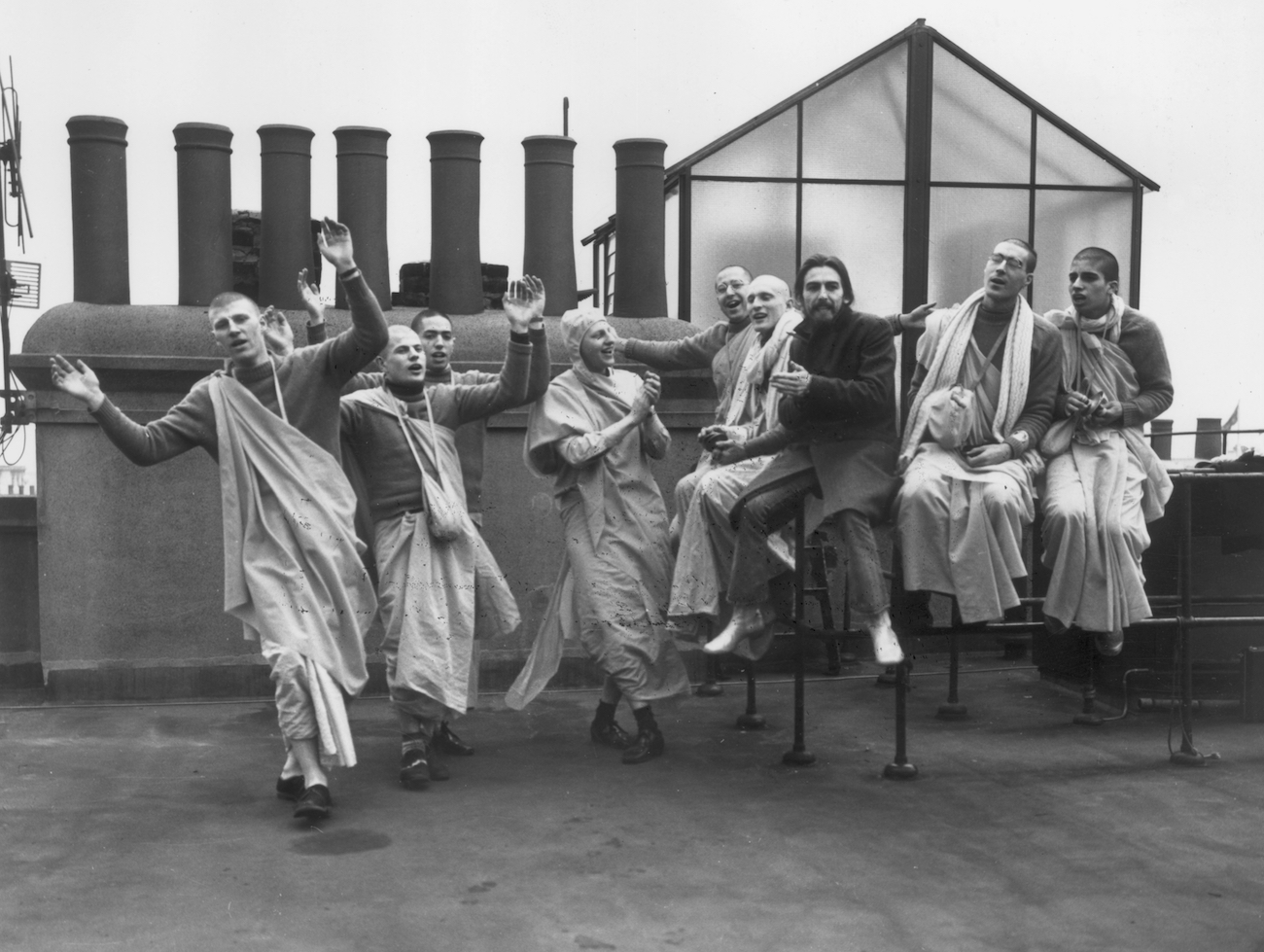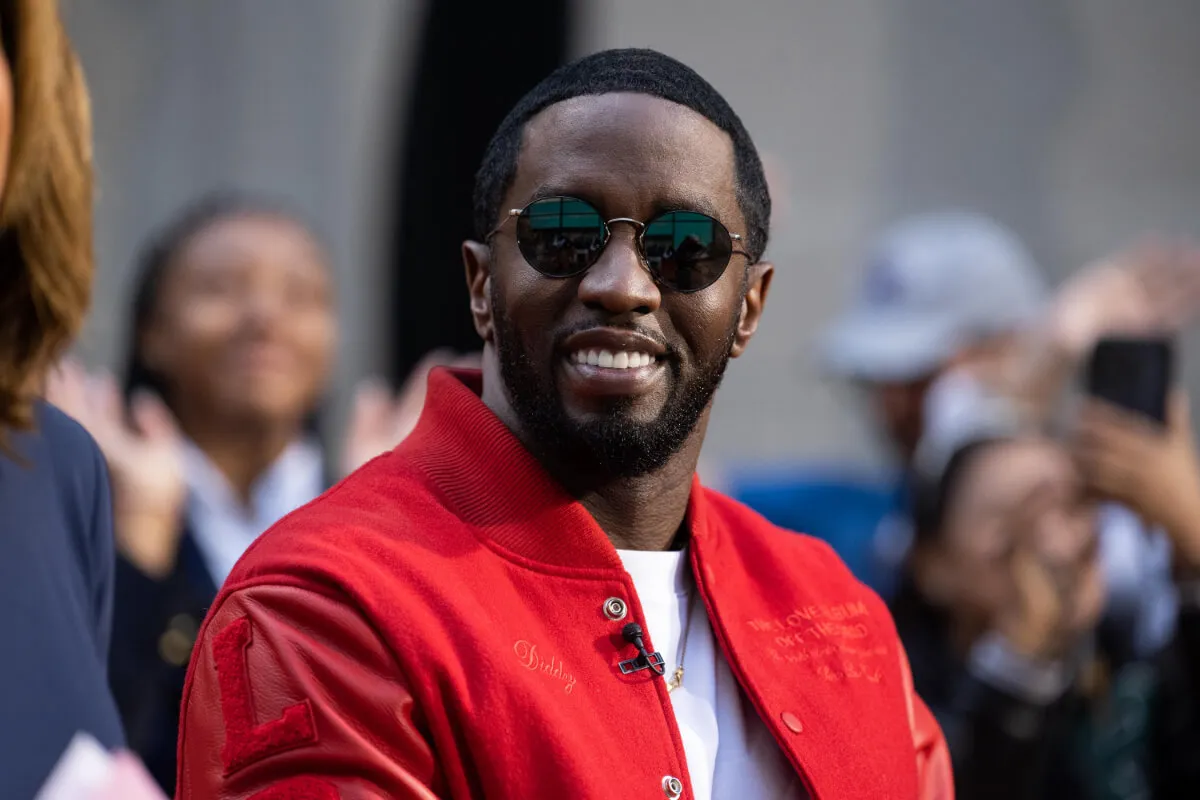George Harrison Said He Liked Producing ‘The Radha-Krishna Temple’ More Than Recording Pop Albums
One of the first projects George Harrison worked on outside of The Beatles was the album The Radha-Krishna Temple. Toward the end of his time in the group, George slowly dropped his Beatle George mask. Producing the religious record confirmed that George was no longer a Beatle and that his spirituality was not a passing phase.
The Radha-Krishan Temple was the kind of albums George wanted to make.

George Harrison turned to spirituality in the 1960s
In the mid-1960s, George had become disenchanted with many things, including fame. Being a Beatle had essentially extinguished the light inside him and had wrung him out. He was bored.
Thankfully, George met Ravi Shankar, who gave him religious texts and his first sitar lessons. The legendary sitar player was the first person that wowed him. According to Quartz India, George said, “Ravi was my link into the Vedic world. Ravi plugged me into the whole of reality.”
In 1982, George told a leader in the Hare Krishna movement, Mukunda Goswami (per the Guardian), that his spiritual journey started when he hit a wall.
“It was like reaching the top of a wall and then looking over and seeing that there’s so much more on the other side,” George said. “So I felt it was part of my duty to say, ‘Oh, OK, maybe you are thinking this is all you need – to be rich and famous – but actually it isn’t.'”
Then, George made friends with members of the U.K. Hare Krishna movement. George and the members would later record The Radha-Krishna Temple.
“In India, you know, they chant those sort of things all over the place,” George told David Wigg in 1969 (per Beatles Interviews). “The thing about the word ‘Hare’ is the word that calls upon the energy that’s around from the Lord. Whichever Lord you like, really. But in this case it happens to be Krishna… which is like the words that Christ said became the Christian Bible.
“And the words that Krishna said became the sort of Hindu Bible called the Bhagwat Ghita. So it’s just by merely the repetition of that. It’s the same if you were just to go round chanting Christ, Christ, Christ, Christ. If you say it long enough then you build up this identification. Whatever you identify with, you become one with it. So it’s really a method of becoming one with God.”
George liked recording ‘The Radha-Krishna Temple’ more than pop albums
In 1969, George chose to invite the members of the U.K. Hare Krishna movement to Apple Studios to record a single called “The Hare Krishna Mantra” and then later, The Radha-Krishna Temple. He decided to take on the project because it would make him happy. It furthered his spirituality and spread the word.
When George produced The Radha-Krishna Temple, he liked it more than recording a pop album.
“Well, it’s just all a part of service, isn’t it? Spiritual service, in order to try to spread the mantra all over the world. Also, to try and give the devotees a wider base and a bigger foothold,” George explained.
Goswami asked him, “How did the success of this record of Hare Krishna devotees chanting compare with some of the rock musicians you were producing at the time, like Jackie Lomax, Splinter, and Billy Preston?”
“There was less commercial potential in it, but it was much more satisfying to do, knowing the possibilities that it was going to create, just by doing a three-and-a-half-minute mantra,” George replied. “That was more fun really than trying to make a pop hit record.”
Isle of Wight Festival played ‘Hare Krishna Mantra’ during intermission
George liked to think the album had some effect on the Western world. “After all, the sound is God,” he said. Goswami pointed out, “When Apple called a press conference to promote the record, the media seemed to be shocked to hear you speak about the soul and God being so important.”
“I felt it was important…to come out of the closet and really tell them,” George said. “Because once you realise something, then you can’t pretend you don’t know it any more. So the idea was to try to spiritually infiltrate society, so to speak.
“One of the greatest thrills of my life, actually, was seeing you all on BBC’s Top of the Pops [with the Hare Krishna single]. I couldn’t believe it. My strategy was to keep it to a three-and-a-half-minute version of the mantra so they’d play it on the radio, and it worked.”
Then, in the summer of 1969, the Isle of Wight Festival played “Hare Krishna Mantra” during the intermission right before Bob Dylan’s set.
“They played it while they were getting the stage set up for Bob. It was great. Besides, it was a catchy tune, and the people didn’t have to know what it meant to enjoy it,” George said.
So George’s efforts on The Radha-Krishna Temple weren’t for nothing. He spread the word, even faintly, making a big ripple.


